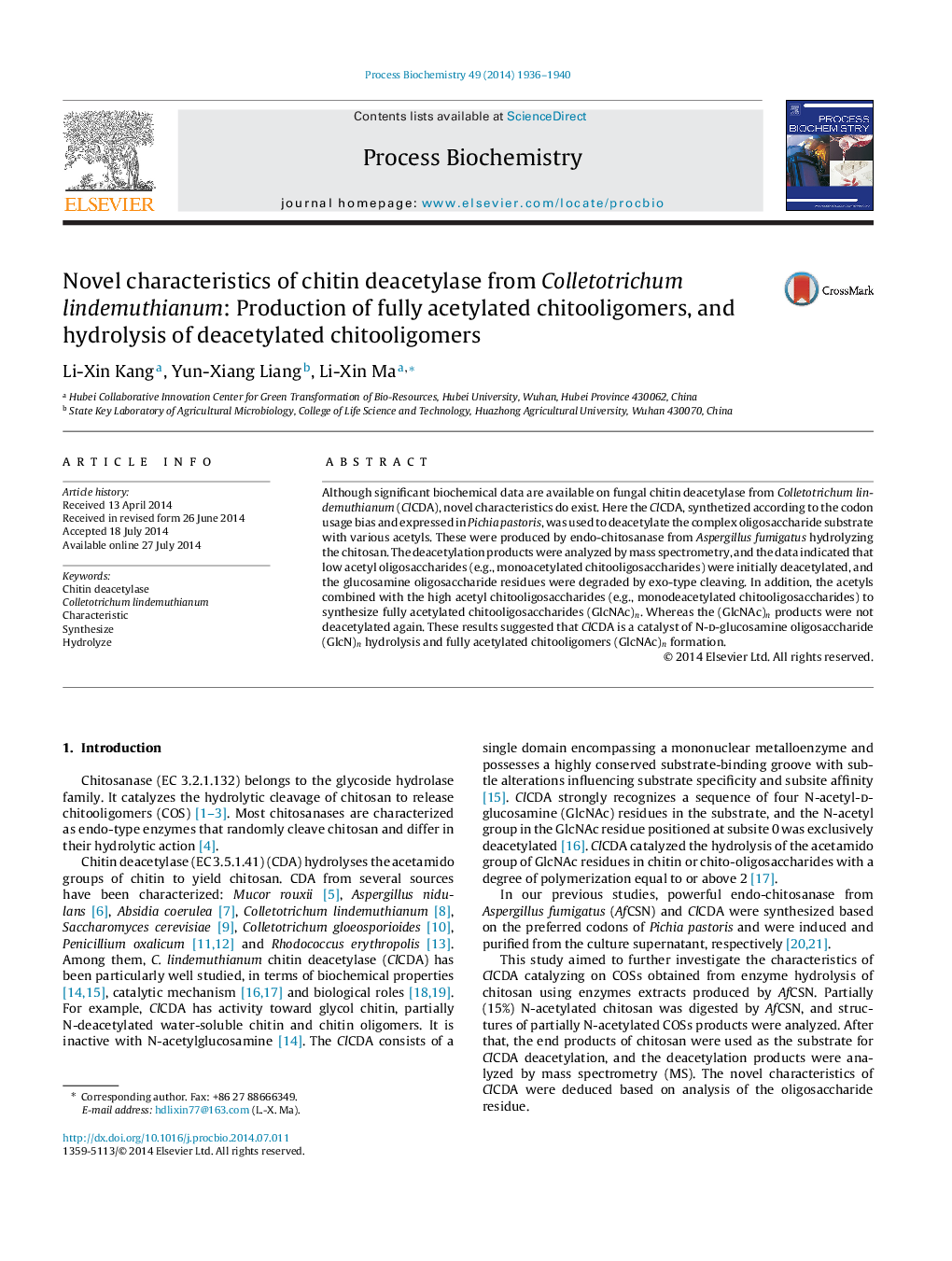| Article ID | Journal | Published Year | Pages | File Type |
|---|---|---|---|---|
| 34453 | Process Biochemistry | 2014 | 5 Pages |
•The complex oligosaccharide with various acetyls was deacetylated by ClCDA.•The low acetyl oligosaccharides were initially deacetylated.•The glucosamine oligosaccharide residues were degraded by exo-type cleaving.•The acetyls combined with the high acetyl chitooligomers to form fully acetylated chitooligomers (GlcNAc)n.•The (GlcNAC)n products were not deacetylated by ClCDA again.
Although significant biochemical data are available on fungal chitin deacetylase from Colletotrichum lindemuthianum (ClCDA), novel characteristics do exist. Here the ClCDA, synthetized according to the codon usage bias and expressed in Pichia pastoris, was used to deacetylate the complex oligosaccharide substrate with various acetyls. These were produced by endo-chitosanase from Aspergillus fumigatus hydrolyzing the chitosan. The deacetylation products were analyzed by mass spectrometry, and the data indicated that low acetyl oligosaccharides (e.g., monoacetylated chitooligosaccharides) were initially deacetylated, and the glucosamine oligosaccharide residues were degraded by exo-type cleaving. In addition, the acetyls combined with the high acetyl chitooligosaccharides (e.g., monodeacetylated chitooligosaccharides) to synthesize fully acetylated chitooligosaccharides (GlcNAc)n. Whereas the (GlcNAc)n products were not deacetylated again. These results suggested that ClCDA is a catalyst of N-d-glucosamine oligosaccharide (GlcN)n hydrolysis and fully acetylated chitooligomers (GlcNAc)n formation.
